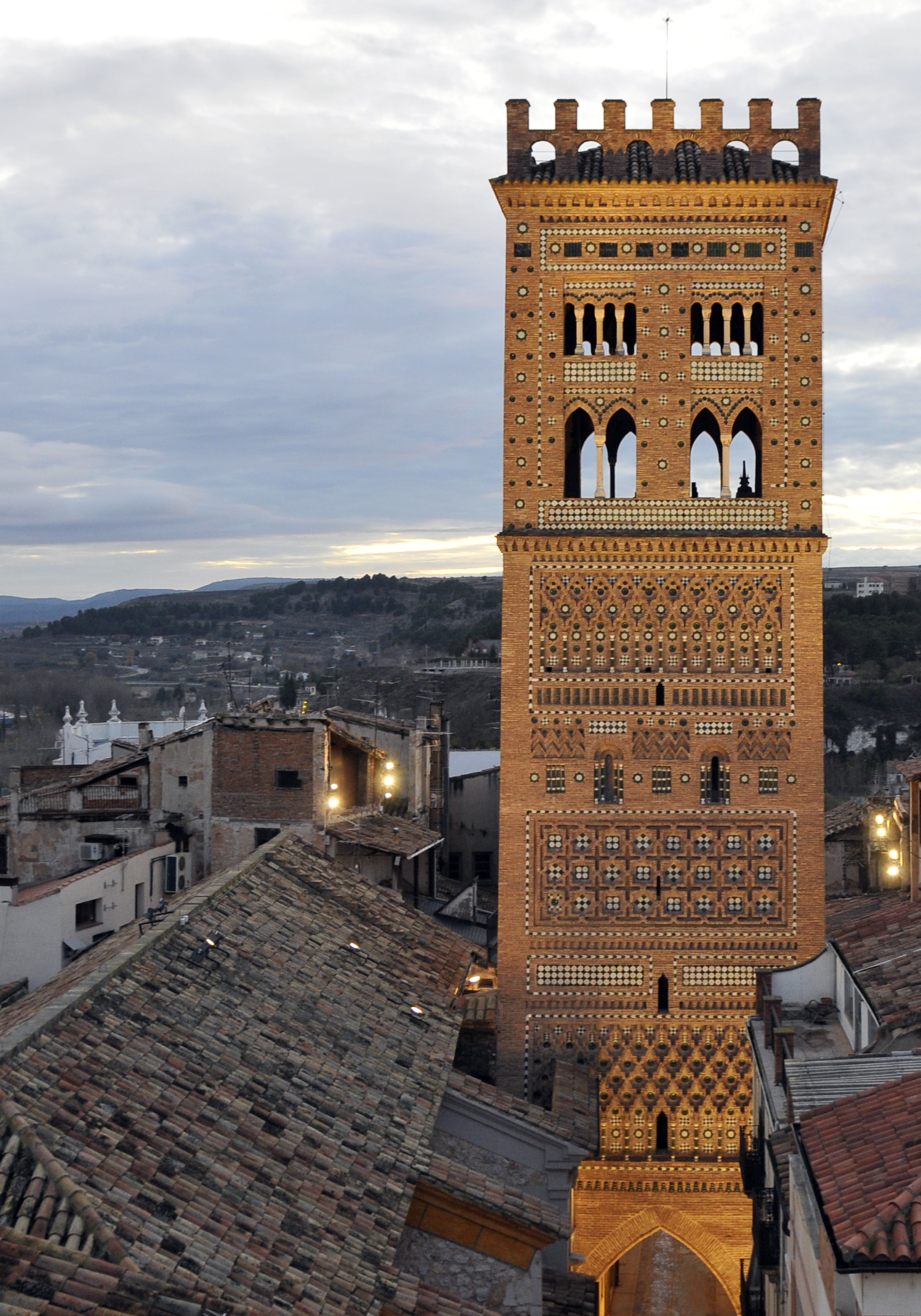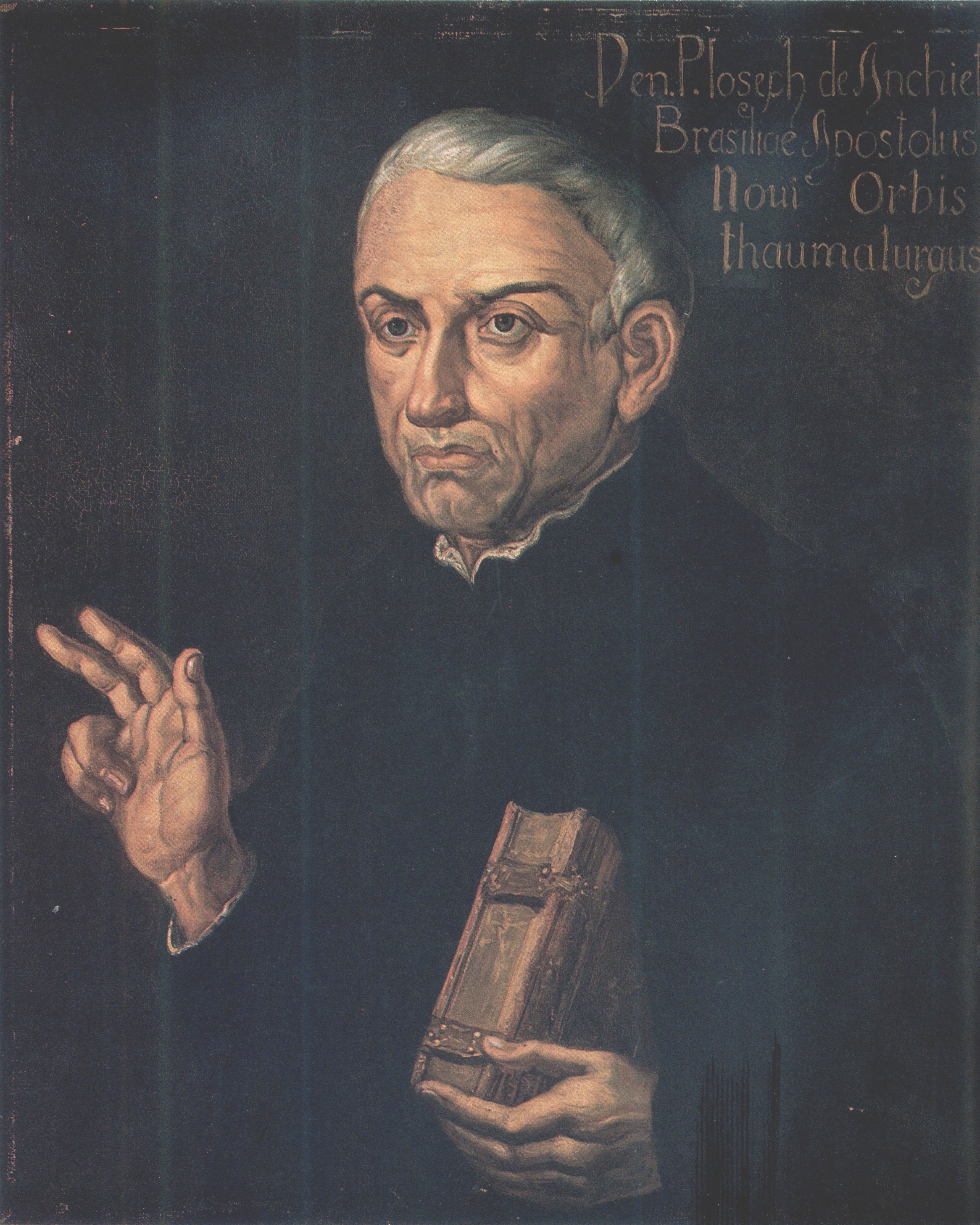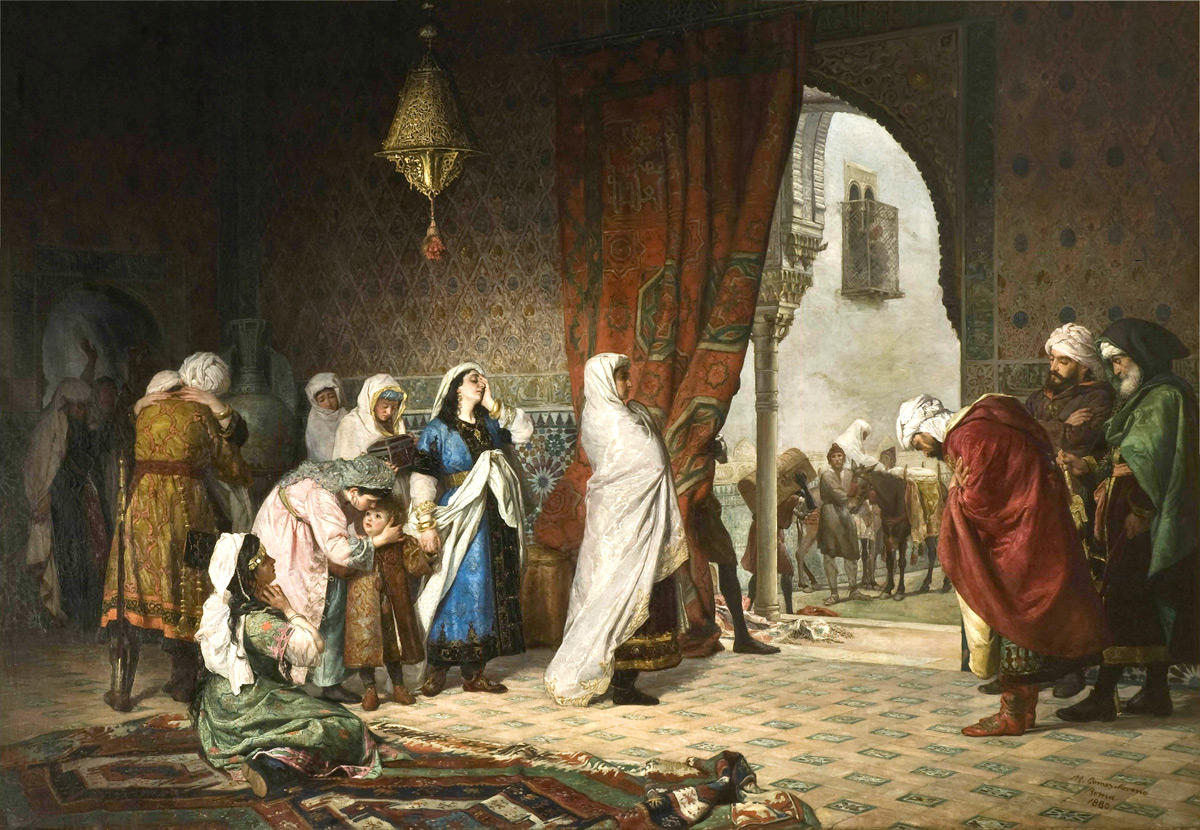|
La Convivencia
''Convivencia'' (Spanish for "living together") is a term used by scholar Américo Castro to describe a period in Spanish history from the Muslim Umayyad conquest of Hispania in the 700s to the expulsion of the Jews in 1492. It claims that in the different Moorish Iberian kingdoms, the Muslims, Christians and Jews lived in relative peace. This idea suggests that medieval Spain was a place of religious tolerance and cultural exchange-very different from later periods when only Catholicism was allowed. However, some scholars have challenged the historicity of the above view of intercultural harmony, depicting it as a myth, and claiming that it is ahistorical. Qurtuba: Algunas reflexiones críticas sobre el califato de Córdoba y el mito de la convivencia [...More Info...] [...Related Items...] OR: [Wikipedia] [Google] [Baidu] |
Américo Castro
Américo Castro Quesada (May 4, 1885 – July 25, 1972) was a Spanish cultural historian, philologist, and literary critic who challenged some of the prevailing notions of Spanish identity, raising controversy with his conclusions that Spaniards did not become the distinct group that they are today until after the Islamic conquest of Hispania of 711, an event that turned them into an Iberian caste co-existing among Moors and Jews, and that the history of Spain and Portugal was adversely affected with the success in the 11th to the 15th centuries of the "Reconquista" or Christian reconquest of the Iberian Peninsula and with the Spanish expulsion of the Jews (1492). Life Castro was born to Spanish parents on May 4, 1885, in Cantagalo, Rio de Janeiro, Brazil. In 1890, his parents returned with him to Spain. In 1904 he graduated from the University of Granada, going on to study at the Sorbonne in Paris from 1905 to 1907. After returning to Spain he organized the Center for Histor ... [...More Info...] [...Related Items...] OR: [Wikipedia] [Google] [Baidu] |
Reconquista
The ''Reconquista'' (Spanish language, Spanish and Portuguese language, Portuguese for ) or the fall of al-Andalus was a series of military and cultural campaigns that European Christian Reconquista#Northern Christian realms, kingdoms waged against the al-Andalus, Muslim kingdoms following the Muslim conquest of the Iberian Peninsula by the Umayyad Caliphate, culminating in the reign of the Catholic Monarchs of Spain. The beginning of the ''Reconquista'' is traditionally dated to the Battle of Covadonga ( or 722), in which an Kingdom of Asturias, Asturian army achieved the first Christian victory over the forces of the Umayyad Caliphate since the beginning of the military invasion. The ''Reconquista'' ended in 1492 with the Granada War#Last stand at Granada, fall of the Nasrid kingdom of Granada to the Catholic Monarchs of Spain, Catholic Monarchs. In the late 10th century, the Umayyad vizier Almanzor waged a series of military campaigns for 30 years in order to subjugate ... [...More Info...] [...Related Items...] OR: [Wikipedia] [Google] [Baidu] |
Mudéjar
Mudéjar were Muslims who remained in Iberia in the late medieval period following the Christian reconquest. It is also a term for Mudéjar art, which was greatly influenced by Islamic art, but produced typically by Christian craftsmen for Christian patrons. ''Mudéjar'' was used in contrast to both Muslims in Muslim-ruled areas (for example, Muslims of Granada before 1492) and Moriscos, who were often forcibly converted and may or may not have continued to secretly practice Islam. The corresponding term for Christians living under Muslim rule is Mozarabs. Starting from the eleventh century, when larger regions previously under Muslim control fell to Christian kingdoms, treaties were established with the remaining Muslim population which defined their status as Mudejar. Their status, modelled after the dhimmi, established a parallel society with its own religious, legal, administrative and fiscal autonomy and institutions, while being subject to their Christian kings and l ... [...More Info...] [...Related Items...] OR: [Wikipedia] [Google] [Baidu] |
Mozarab
The Mozarabs (from ), or more precisely Andalusi Christians, were the Christians of al-Andalus, or the territories of Iberia under Muslim rule from 711 to 1492. Following the Umayyad conquest of the Visigothic Kingdom in Hispania, the Christian population of much of Iberia came under Muslim control. Initially, the vast majority of Mozarabs kept Christianity and their dialects descended from Latin. Gradually, the population converted to Islam—an estimated 50% by the year 951 ''Cited in'' —and was influenced, in varying degrees, by Arab customs and knowledge, and sometimes acquired greater social status in doing so. The local Romance vernaculars, with an important contribution of Arabic and spoken by Christians and Muslims alike, are referred to as Andalusi Romance (also called ''Mozarabic language''). Mozarabs were mostly Catholics of the Visigothic or Mozarabic Rite. Due to Sharia and fiqh being confessional and only applying to Muslims, the Christians paid the jizya tax, ... [...More Info...] [...Related Items...] OR: [Wikipedia] [Google] [Baidu] |
Morisco
''Moriscos'' (, ; ; "Moorish") were former Muslims and their descendants whom the Catholic Church and Habsburg Spain commanded to forcibly convert to Christianity or face compulsory exile after Spain outlawed Islam. Spain had a sizeable Muslim population, the '' mudéjars'', in the early 16th century. The Iberian Union mistrusted Moriscos and feared that they would prompt new invasions from the Ottoman Empire after the Fall of Constantinople, so between 1609 and 1614 they began to expel them systematically from the various kingdoms of the Union. The most severe expulsions occurred in the eastern Kingdom of Valencia. The exact number of Moriscos present in Spain before the expulsion is unknown and can only be guessed based on official records of the edict of expulsion. Furthermore, the overall number who were able to avoid deportation is also unknown, with estimates on the proportion of those who avoided expulsion or returned to Spain ranging from 5% to 40%.Trevor J. Dadson' ... [...More Info...] [...Related Items...] OR: [Wikipedia] [Google] [Baidu] |
Converso
A ''converso'' (; ; feminine form ''conversa''), "convert" (), was a Jew who converted to Catholicism in Spain or Portugal, particularly during the 14th and 15th centuries, or one of their descendants. To safeguard the Old Christian population and make sure that the ''converso'' " New Christians" were true to their new faith, the Holy Office of the Inquisition was established in Spain in 1478. The Catholic Monarchs of Spain Ferdinand and Isabella expelled the remaining openly practising Jews by the Alhambra Decree of 1492, following the Christian ''Reconquista'' (reconquest) of Spain. However, a significant proportion of these remaining practising Jews chose to join the already large ''converso'' community rather than face exile. ''Conversos'' who did not fully or genuinely embrace Catholicism, but continued to practise Judaism in secrecy, were referred to as ''judaizantes'' " Judaizers" and pejoratively as '' marranos''. New Christian converts of Muslim origin were ... [...More Info...] [...Related Items...] OR: [Wikipedia] [Google] [Baidu] |
Moriscos
''Moriscos'' (, ; ; " Moorish") were former Muslims and their descendants whom the Catholic Church and Habsburg Spain commanded to forcibly convert to Christianity or face compulsory exile after Spain outlawed Islam. Spain had a sizeable Muslim population, the '' mudéjars'', in the early 16th century. The Iberian Union mistrusted Moriscos and feared that they would prompt new invasions from the Ottoman Empire after the Fall of Constantinople, so between 1609 and 1614 they began to expel them systematically from the various kingdoms of the Union. The most severe expulsions occurred in the eastern Kingdom of Valencia. The exact number of Moriscos present in Spain before the expulsion is unknown and can only be guessed based on official records of the edict of expulsion. Furthermore, the overall number who were able to avoid deportation is also unknown, with estimates on the proportion of those who avoided expulsion or returned to Spain ranging from 5% to 40%.Trevor J. Dads ... [...More Info...] [...Related Items...] OR: [Wikipedia] [Google] [Baidu] |
Rebellion Of The Alpujarras (1499–1501)
The First Rebellion of the Alpujarras (; 1499–1501) were a series of uprisings by the Muslim population of the Kingdom of Granada (Crown of Castile), Kingdom of Granada, Crown of Castile (formerly, the Emirate of Granada) against their Catholic rulers. They began in 1499 in the city of Granada in response to mass forced conversions of the Muslim population to the Catholic faith, which were perceived as violations of the 1491 Treaty of Granada. The uprising in the city quickly died down, but it was followed by more serious revolts in the nearby mountainous area of the Alpujarras. The Catholic forces, on some occasions led personally by Ferdinand II of Aragon, King Ferdinand, succeeded in suppressing the revolts and inflicted severe punishment on the Muslim population. The Catholic Monarchs of Spain, Catholic rulers used these revolts as a justification to repudiate the Treaty of Granada and abrogate the rights of the Muslims guaranteed by the treaty. All Muslims of Granada were ... [...More Info...] [...Related Items...] OR: [Wikipedia] [Google] [Baidu] |
Portugal
Portugal, officially the Portuguese Republic, is a country on the Iberian Peninsula in Southwestern Europe. Featuring Cabo da Roca, the westernmost point in continental Europe, Portugal borders Spain to its north and east, with which it shares Portugal-Spain border, the longest uninterrupted border in the European Union; to the south and the west is the North Atlantic Ocean; and to the west and southwest lie the Macaronesia, Macaronesian archipelagos of the Azores and Madeira, which are the two Autonomous Regions of Portugal, autonomous regions of Portugal. Lisbon is the Capital city, capital and List of largest cities in Portugal, largest city, followed by Porto, which is the only other Metropolitan areas in Portugal, metropolitan area. The western Iberian Peninsula has been continuously inhabited since Prehistoric Iberia, prehistoric times, with the earliest signs of Human settlement, settlement dating to 5500 BC. Celts, Celtic and List of the Pre-Roman peoples of the Iberia ... [...More Info...] [...Related Items...] OR: [Wikipedia] [Google] [Baidu] |
Alhambra Decree
The Alhambra Decree (also known as the Edict of Expulsion; Spanish language, Spanish: ''Decreto de la Alhambra'', ''Edicto de Granada'') was an edict issued on 31 March 1492 by the joint Catholic Monarchs of Spain, Isabella I of Castile and Ferdinand II of Aragon, ordering the Expulsion of Jews from Spain, expulsion of practising Jews from the Crowns of Crown of Castile, Castile and Crown of Aragon, Aragon and its territories and possessions by 31 July of that year. Its primary purpose was to eliminate the influence of practising Jews on Spain's large formerly-Jewish ''converso'' New Christian population, to ensure the latter and their descendants did not revert to Judaism. Over half of Spain's Jews had converted as a result of the Massacre of 1391, religious persecution and pogroms which occurred in 1391. Due to continuing attacks, around 50,000 more had converted by 1415. A further number of those remaining chose to convert to avoid expulsion. As a result of the Alhambra Decree a ... [...More Info...] [...Related Items...] OR: [Wikipedia] [Google] [Baidu] |
Spanish Inquisition
The Tribunal of the Holy Office of the Inquisition () was established in 1478 by the Catholic Monarchs of Spain, Catholic Monarchs, King Ferdinand II of Aragon and Queen Isabella I of Castile and lasted until 1834. It began toward the end of the ''Reconquista'' and aimed to maintain Catholic Church, Catholic orthodoxy in their kingdoms and replace the Papal Inquisition in Spain, Medieval Inquisition, which was under Pope, papal control. Along with the Roman Inquisition and the Portuguese Inquisition, it became the most substantive of the three different manifestations of the wider Catholic Inquisition. The Inquisition was originally intended primarily to identify Heresy in Christianity, heretics among those who converted from Judaism and Islam to Catholicism. The regulation of the faith of newly converted Catholics was intensified following Alhambra Decree, royal decrees issued in 1492 and 1502 ordering Jews and Muslims to convert to Catholicism or leave Crown of Castile, Ca ... [...More Info...] [...Related Items...] OR: [Wikipedia] [Google] [Baidu] |
Fall Of Granada
The Granada War was a series of military campaigns between 1482 and 1492 during the reign of the Catholic Monarchs, Isabella I of Castile and Ferdinand II of Aragon, against the Nasrid dynasty's Emirate of Granada. It ended with the defeat of Granada and its annexation by Castile, ending the last remnant of Islamic rule on the Iberian peninsula. The ten-year war was not a continuous effort but a series of seasonal campaigns launched in spring and broken off in winter. The Granadans were crippled by internal conflict and civil war, while the Christians were generally unified. The Granadans were also bled economically by the tribute they had to pay Castile to avoid being attacked and conquered. The war saw the effective use of artillery by the Christians to rapidly conquer towns that would otherwise have required long sieges. On January 2, 1492, Muhammad XII of Granada (King Boabdil) surrendered the Emirate of Granada, the city of Granada, and the Alhambra palace to the Castilia ... [...More Info...] [...Related Items...] OR: [Wikipedia] [Google] [Baidu] |








